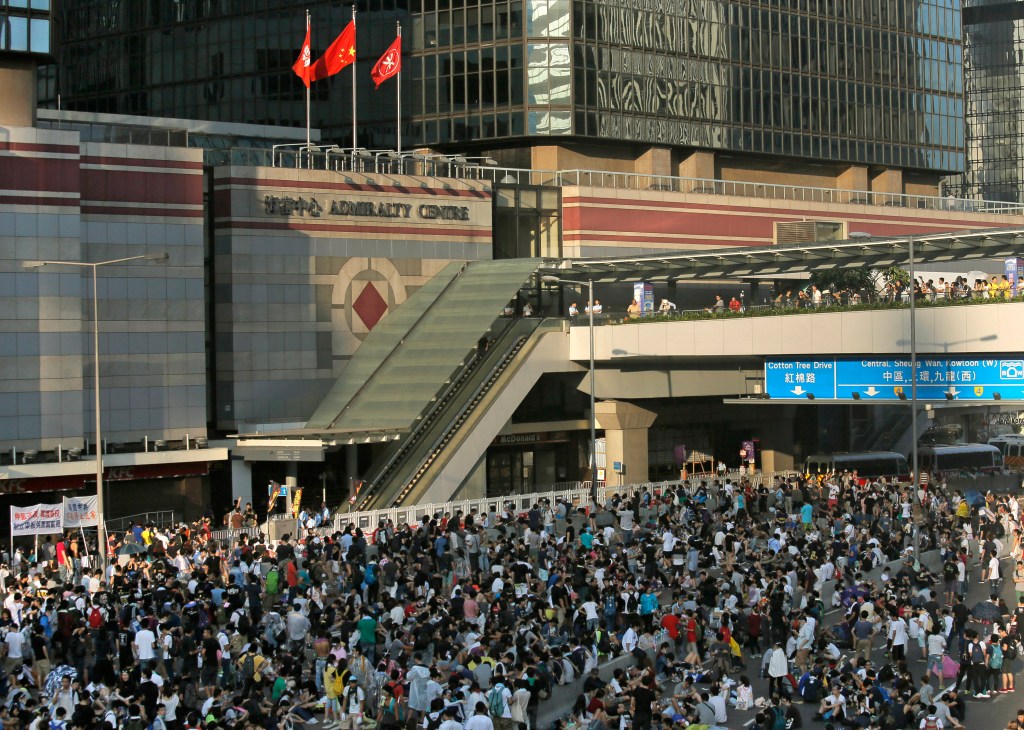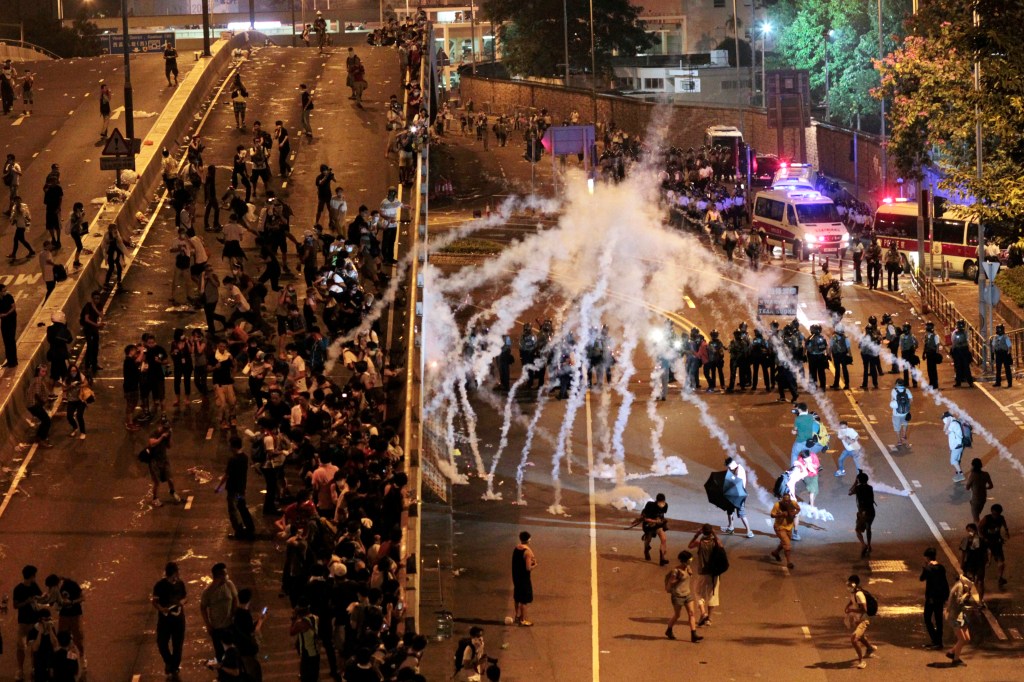BEIJING — Pro-democracy protests in Hong Kong have handed China’s Communist leadership a thorny political dilemma.
Beijing cannot crack down too harshly on the semi-autonomous territory where a freewheeling media ensures global visibility, but it is determined to end the demonstrations quickly so as not to embolden dissidents, separatists and anti-government protesters elsewhere in China. It has blocked most news and images of the protests from being published on the mainland.
Demonstrators demanding a greater say in choosing the financial center’s leader, or chief executive, defied attempts over the weekend by riot police to end their sit-ins with blasts of tear gas and pepper spray, and on Monday fanned out to more neighborhoods of Hong Kong in a tense standoff.
“The Chinese authorities do not want to see it spread to the mainland,” said Beijing-based historian and political analyst Zhang Lifan. “It has put tremendous pressure on Beijing, which is most worried about a domino effect.”
Beijing’s increasingly hard-line leadership, which has clamped down over the past year and a half on dissent and any calls for greater democracy, is highly unlikely to agree to any discussion about political reforms in Hong Kong. Nor does it want bloodshed.
But it will use force — as much as it deems necessary — to ensure stability, Zhang said.
“After all, it believes that political power grows out of the barrel of a gun, instead of elections,” he said. “It will return to this simplistic law of the jungle.”
An opinion piece that was briefly available on the news site of the nationalistic Chinese newspaper Global Times suggested Beijing send its military police, part of China’s armed forces, to help in “suppressing the riots.” The editorial was later deleted. In Hong Kong, Beijing-backed Chief Executive Leung Chun-ying denied what he called “rumors” that the Chinese military would intervene.
So far, the situation hasn’t reached the point of requiring troops, said Steve Tsang, senior fellow at the University of Nottingham’s China Policy Institute. Even the decision by Hong Kong’s territorial government over the weekend to use riot police went too far, putting the still-peaceful demonstrations on a dangerous trajectory, Tsang said.
“If the authorities change the tactic, go back to the traditional method of policing, pull back the riot police and talk to the people, we will have the demonstration back in the defined area,” Tsang said.
Beijing will orchestrate the use of force if necessary to break up crowds and keep military deployment only as a last resort, said Willy Lam, an analyst at the Chinese University of Hong Kong.
“It’s possible Hong Kong police have enough muscle so they could use water cannons and other things, perhaps rubber bullets, to disperse the crowds,” Lam said.
The protests reflect disillusionment with mainland Chinese rule among Hong Kongers, especially the younger generation, who feel Beijing has failed to keep promises of greater democracy for the territory. Those promises were written into Hong Kong’s charter as part of the “one country, two systems” arrangement that Britain negotiated with Beijing when the former colony was returned to China in 1997.
Last month, Beijing rejected a proposal for open nominations of candidates for Hong Kong’s first-ever leadership election, promised for 2017. Instead, all candidates must continue to be picked by a panel that is mostly aligned with Beijing.
Residents have “realized Beijing will not change its mind, and they want to send the message that ‘we want to hold our future in our hands,'” Lam said.
Any crackdown would play out in front of a relatively free news media in Hong Kong, which under “one country, two systems” has kept its own legal system and many Western-style civil liberties not enjoyed on the mainland.
Chinese state media, on the other hand, have provided little coverage of the Hong Kong protests beyond noting that an illegal gathering spun out of control and was being curtailed by police.
The Chinese government’s main official response to the protests was a brief statement condemning their illegal assembly and throwing its support behind the Leung administration’s attempts to disperse the crowds.
“We believe the majority of Hong Kong residents will not tolerate a few people’s radical, illegal activism at the cost of Hong Kong’s rule of law, stability and prosperity,” China’s liaison office with Hong Kong said in the statement Sunday.
China’s main TV broadcaster, CCTV, showed no images from the Hong Kong streets. That contrasted sharply with its detailed coverage of the protests and tension surrounding the August shooting of an unarmed 18-year-old black man in Ferguson, Missouri, with on-site reporters and studio analysts discussing racism and inequality in American society.
However, an alternate narrative has seeped into the mainland through cellphone instant messaging services. Users have posted video clips and photos from Hong Kong streets, as well as articles on the unrest sent as photo images — not text — so they can circumvent censorship that involves searching text messages for key phrases.
Discussions were muted on China’s Twitter-like Sina Weibo, where Beijing has tightened censorship and intimidated microbloggers from posting politically sensitive materials following a clampdown last year. China also has blocked access to the photo-sharing service Instagram.
Lam said that however the protests unfold, Hong Kong’s people have sent a strong signal that “the rule of the game has changed” and they are no longer content only with China’s economic prosperity without a say in their future.
In downtown Beijing, economist and frequent government critic Wen Kejian said Hong Kongers should be given a genuine choice.
“The economy of Hong Kong has already been so prosperous and the city has been so open and international that the people of Hong Kong have the wisdom to master their political future,” Wen said. “Stability without freedom is slavery. It is meaningless.”
Send questions/comments to the editors.




Success. Please wait for the page to reload. If the page does not reload within 5 seconds, please refresh the page.
Enter your email and password to access comments.
Hi, to comment on stories you must . This profile is in addition to your subscription and website login.
Already have a commenting profile? .
Invalid username/password.
Please check your email to confirm and complete your registration.
Only subscribers are eligible to post comments. Please subscribe or login first for digital access. Here’s why.
Use the form below to reset your password. When you've submitted your account email, we will send an email with a reset code.